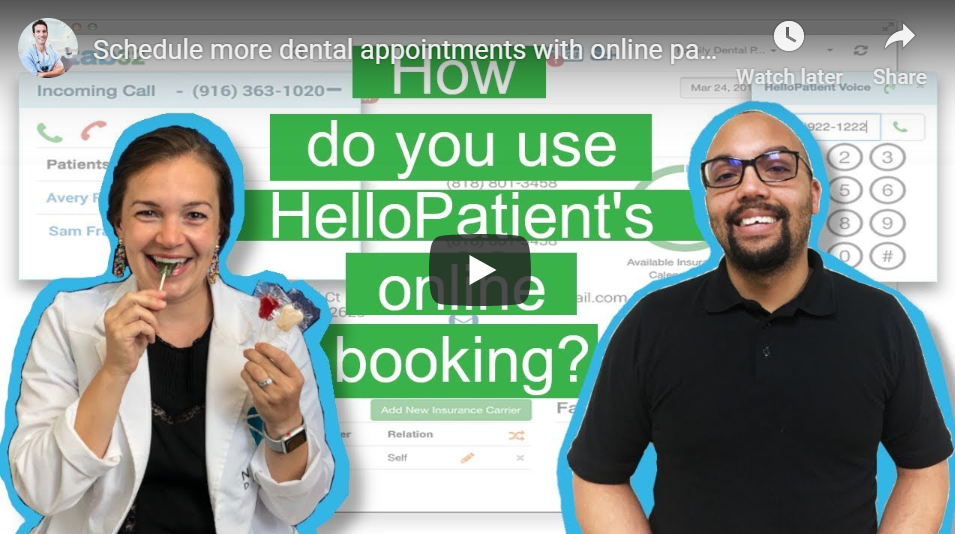
One of the keys to creating a patient-first experience is to make booking an appointment with you quick and easy.
As consumers are getting used to self-service features (e.g., in mobile apps and online portals) when they interact with service providers, it’s becoming more important that your dental practice offers such convenience to your patients.
In fact, 38% of patient appointments will be self-scheduled. Offering a patient-friendly online scheduling tool can help you streamline the patient experience and increase patient satisfaction while reducing the workload of your front office staff, so you can better utilize the resources that are currently spent on scheduling, confirming, reminding, and re-scheduling appointments by phone.
Removing friction in the booking process will make it easier for patients to set up an appointment with you, helping you attract new patients, get existing patients to follow up on their treatments, and retain current patients by making it convenient to schedule checkup and cleaning.
When you use tab32's online scheduling system, there are two ways patients can set up appointments. One is called “auto-booking” and the other is called “request appointment.”
They work slightly differently and here’s how you can use them effectively to improve patient experience:
Both features allow patients to select an appointment time using your online scheduling software application. After the appointment is set, the system will send out confirmation and reminders so your staff doesn’t have to manually call every patient to follow up.
Some of these applications also integrate with patient records so form fields can be pre-populated for a more streamlined patient experience.
With the auto-booking feature, patients can select date and time from a calendar and the reason for their visits. The appointment will be placed automatically onto your schedule without any human intervention.
Auto-booking is ideal for managing appointment scheduling with existing patients who understand your procedures and the kind of services they need.
While this feature takes the majority of the manual work off your front-office staff’s plate, it’s important to have someone review the appointments on a regular basis to ensure that patients are selecting the correct appointment type (e.g., emergency counsel, new patient exam, cleaning) so the right amount of time is allocated to each appointment.
With this function, patients submit a request for setting an appointment at a specific date/time and for a specific appointment type. Your staff will field the request and then apply it to your schedule before a confirmation is sent to the patient.
The appointment request feature is typically used for new patients because you may need to gather more information, such as insurance coverage or medical history, before confirming the appointment.
In order to capture as many new patients as possible with this functionality, you need to make sure that a front-desk staff member is regularly monitoring the requests that come in to either accept the appointment request or follow up with patients to book the appointment.
An online scheduling system can help you deliver a patient-first experience by streamlining the appointment booking process. Here’s how you can best leverage the technology for your dental practice:
Since the cost of dental treatment is mostly transparent and dictated by insurance companies, the best way to differentiate your practice from your competitors is to improve the patient experience and make it easy to get care from you.
A well-orchestrated appointment setting procedure can help improve patient experience, streamline front-office processes, and lower your staff’s workload so they can focus on more productive activities. As a result, your practice can attract more patients and become more profitable.
These Stories on Dental Marketing Tips
No Comments Yet
Let us know what you think